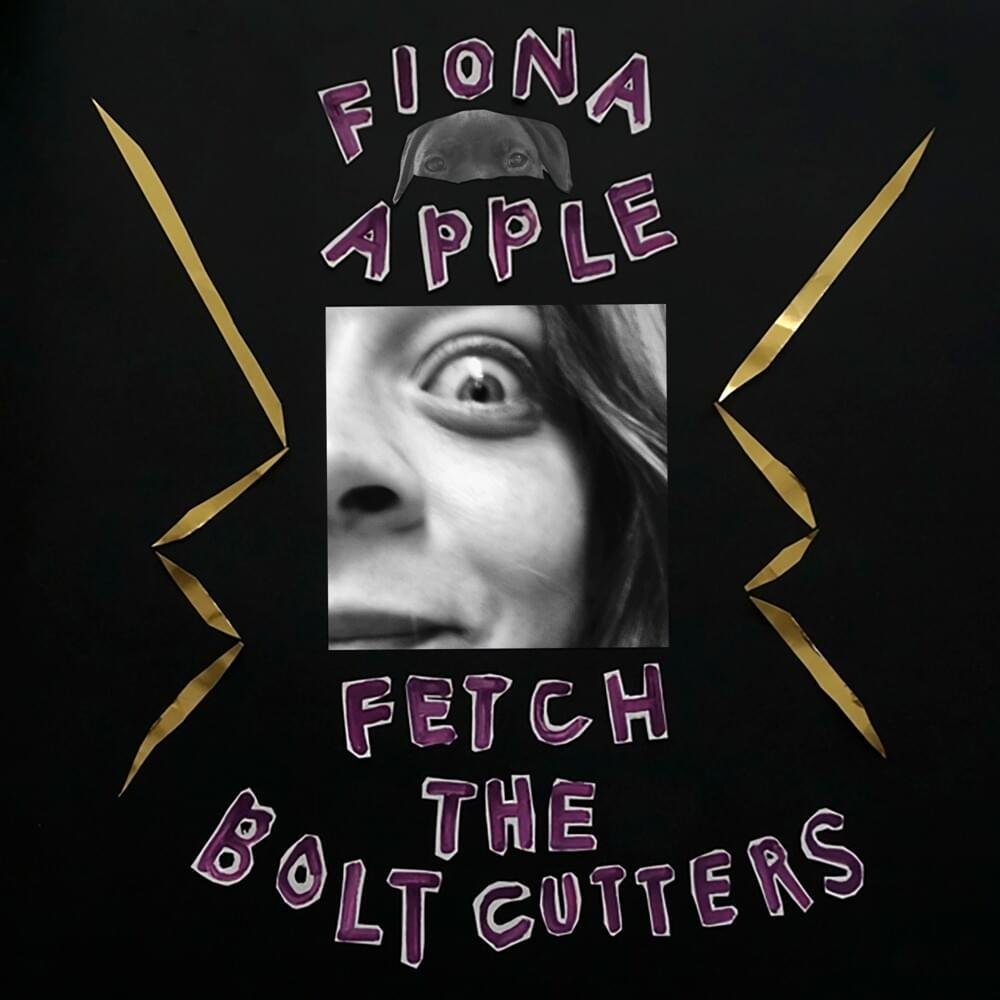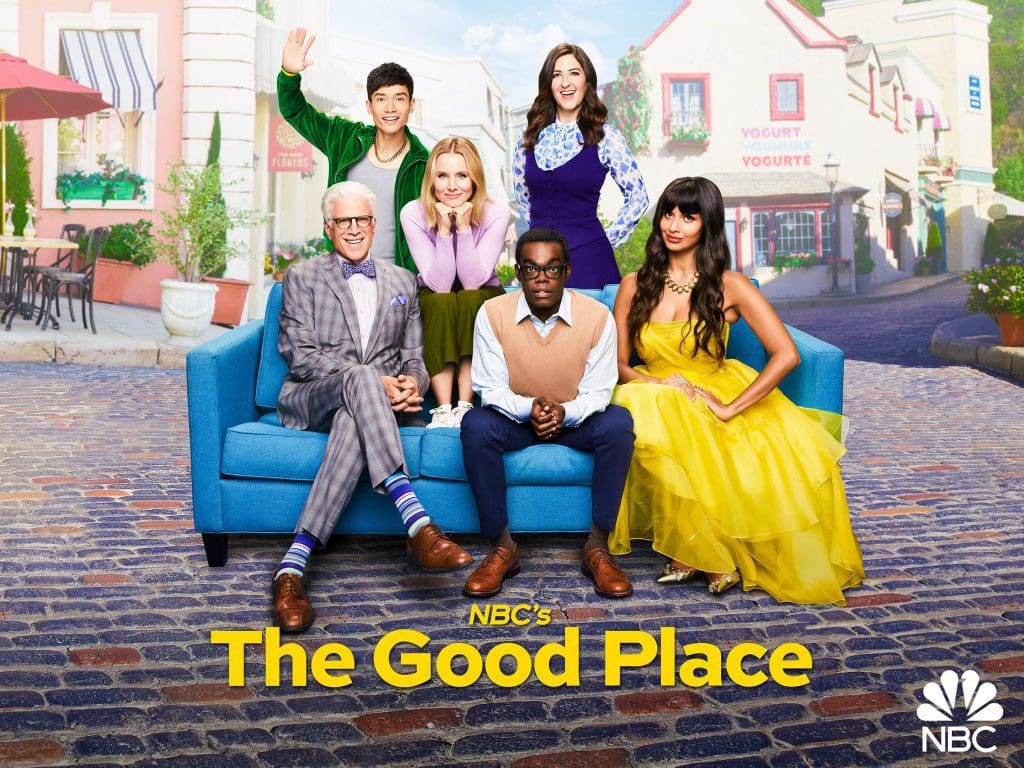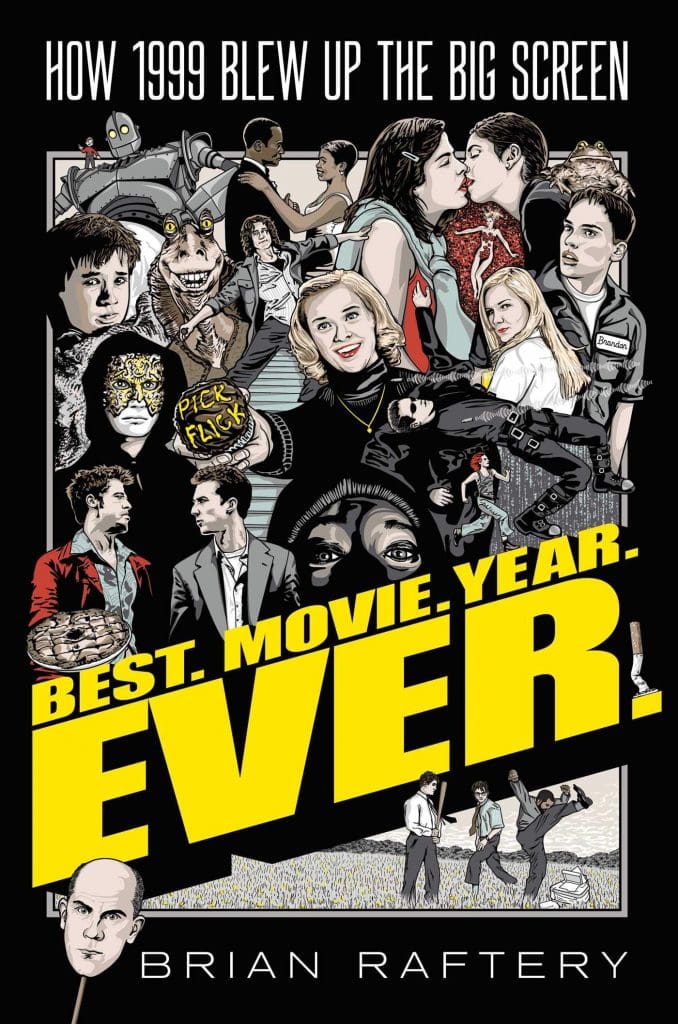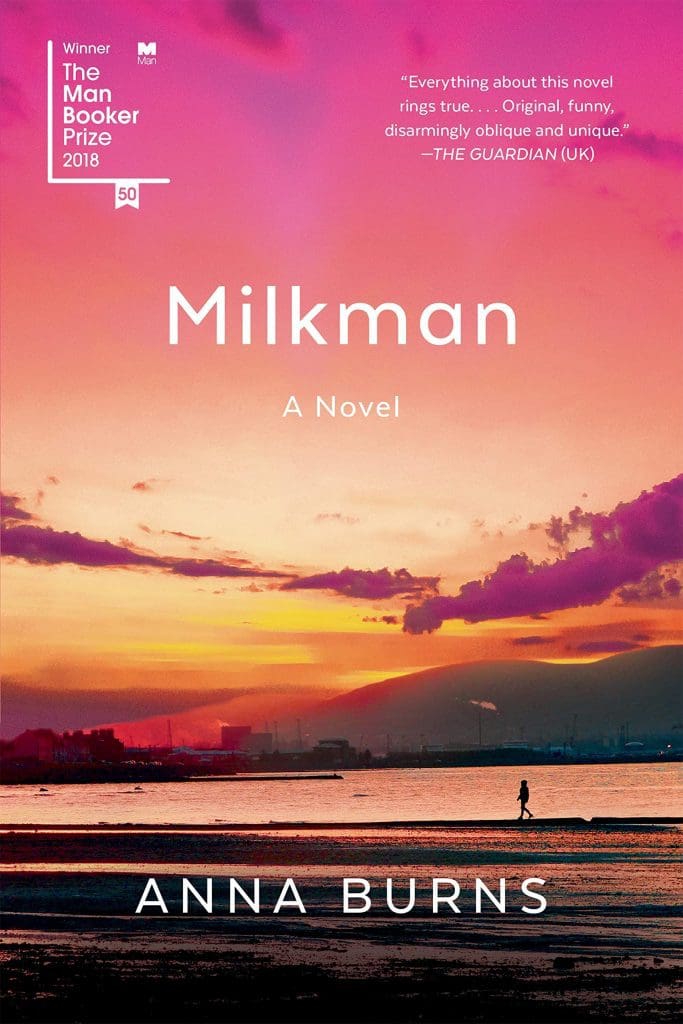March, April, soon to be May—there’s some sense that the days and weeks are blurring together as most of the nation remains under lockdown, but it’s our hope our readers are staying safe. We’re back once again to recommend some books, films, and other works that might offer welcome relief or distraction as we all Shelter in Place:

Cade Johnson, Intern: As I get more accustomed to my Shelter in Place routine, I have been turning to books and music to inject a spark of novelty into my everyday. Luckily, Fiona Apple released her new record, Fetch the Bolt Cutters, this month, against guidance from her record label to delay the release until October. On March 31, close friend and roommate Zelda Hallman posted a video of Apple to her Instagram profile teasing, “Should I release it? Like soon, like really soon? I think I’m gonna.” Such is Fiona Apple’s way. Her artistic vision—which tends toward undermining convention and expectation—is of paramount importance.
The album is perfectly imperfect, percussive, cacophonous, and warm. It’s unpolished, too, and worn, like a hand-me-down from the gods. It was recorded in Apple’s home in Venice, California, where the walls and floors, and even her dogs, have found musical purpose as instrumental pieces on the record. Lyrically, it feels like being welcomed into Apple’s home, sitting at the kitchen table for hours while she tells you her stories and confides in you, sharing what she’s learned about herself and her relationship to the world from those stories. For example, in “Relay,” Apple lists her grievances with people whose lives present as perfect, hinting at the performativity of the digital age, but chants endlessly a catchy cautionary mantra: “Evil is a relay sport/when the one whose burned turns to pass the torch.”
Some of my favorite tracks are “Shameika,” “Under the Table, ” and “Cosmonauts,” although I had to stop myself from listing almost every track on the album, which I have been playing daily on shuffle. The title of the record is a line from TV show The Fall, wherein Gillian Anderson says “fetch the bolt cutters,” in response to hearing that a young girl is being held captive in an abandoned house. For Apple, it’s about breaking yourself out of the mold that the world has imposed on you, finding your authentic voice and speaking with conviction. It’s a very honest, personal record empowered by Apple’s sense of self and its rejection of toxic masculinity and patriarchal standards of music. Apple seems to have fully relaxed into who she is after the bolts have been cut, and the result is an unabashed and freeing work of art.

Alicia Long, Intern: The Good Place is not what you’d expect it to be. Something that rings true for both the characters of the show and the audience that looks in on it. It’s an interesting take on what an offshoot of heaven might look like—a neighborhood with frozen yogurt on every corner, dream houses, soulmates, and an all-knowing guide named Janet. So what does it take to get there? A rigorous point system is the judge of that, constantly adding and subtracting points based on the ethical merits of your actions during your life on earth. But our protagonist, Eleanor Shellstrop, isn’t the perfect candidate. When she’s welcomed into the afterlife with open arms and the architect of the Good Place neighborhood, Michael, commending her for a well-lived life, she knows immediately there’s been a mistake—that wasn’t her life. She’s not the kind of person heaven would want.
Attempting to fly under the radar, she finds herself amongst seemingly flawless individuals. Chidi, her assigned soulmate, was a moral philosophy professor on earth, and as such he is dead-set on doing things by the rules. And Eleanor’s next door neighbors, the gracious and posh Tahani, and the wise but quiet Jason, only make her feel more out-of-place. With the threat of the Bad Place looming and the architect watching over the neighborhood, Eleanor coerces Chidi into helping her maintain the façade. She’s willing to do whatever it takes to avoid being found out, even if it means trying to be a good person.
In a sea of crime dramas, teen dystopias, and reality TV shows, The Good Place is refreshing. The premise of this philosophical fantasy sitcom feels new, and just as binge-worthy. Riddled with cliff-hangers and sharp turns, the three seasons released to Netflix thus far have proven the ability of the writers to pivot the story in different directions whilst maintaining the same easy humor and rhythm. The show raises some big questions too; each episode seems to tackle some moral conundrum, building on an elaborate conversation about morality and its benefits (or lack thereof). What is it that makes a person “good,” “virtuous,” “honest”—and then, is it worth it? It’s a difficult thing to gauge the amount of good we as individuals put into the world. The particular moment we are living now might be an opportune time for a show like this—one that invites you to think about what kind of person you aim to be and how you impact the people around you.

Zack Ravas, Editorial Assistant: Several weeks into the Bay Area’s Shelter in Place order—how many weeks? Does it matter?—it’s tempting to let one’s thoughts retreat to simpler times, like the final year of the 20th century, when our country’s biggest concern was whether or not the dreaded Y2K bug was going to lead to, as Prince so aptly put it, “party over, oops, out of time.” I went to the movies a lot in 1999, though likely not as much as I would have if I’d been only a few years older: looking back at the film lineup of that year, so many of the movies Hollywood produced were darker, smarter, edgier (or some combination thereof) than what we’ve come to expect today, and very much aimed at adults. I’m thinking of Eyes Wide Shut (Stanley Kubrick’s unheralded masterpiece, I would argue, and even scarier than The Shining); Magnolia (a mess but a glorious mess, and perhaps still Paul Thomas Anderson’s most ambitious film); even Best Picture Winner American Beauty (probably not a film many people will revisit now that Kevin Spacey is persona non grata, but think of how much Alan Ball’s screenplay presaged our current moment, with his story of lecherous middle-aged men and Nazi sympathizers lurking just behind an innocuous suburban facade).
These films and many more are chronicled in Brian Raftery’s excellent book from last year, titled Best. Movie. Year. Ever.: How 1999 Blew Up the Big Screen. An entertainment writer for publications such as Wired, GQ, and Rolling Stone, Raftery charts an intuitive course through what many critics have argued was the last truly great, or at least artistically accomplished, year in American cinema, perhaps the one year of the last four decades that could go toe to toe with those seminal New Hollywood years with their Easy Riders and their Raging Bulls. 1999 was a year that redefined horror with The Blair Witch Project—undoubtedly the scariest film of its decade, and the one that popularized the now ubiquitous found footage genre—and M. Night Shyamalan’s The Sixth Sense, a movie that remains much more than its twist ending. 1999 brought the teen genre back to prominence with popular high school flicks like American Pie and Cruel Intentions—okay, you may say I’m getting away from what made 1999 so great, but while such movies may not be your favorite, they no doubt helped define what high school should look and feel like for a generation of Nineties kids, not unlike John Hughes did for the Eighties; and once I mention Alexander Payne’s Election or Sofia Coppola’s dreamy debut The Virgin Suicides (both based on pretty great novels, by the way), you’ll likely agree the year wasn’t all bad when it came to teenage fare. 1999 was a movie year that questioned reality with mind-bending, genre-breaking films such as Fight Club and Being John Malkovich, and the truth is even with this list I’ve barely scratched the surface of what ’99—as well as Raftery’s excellent book—have to offer.
An essential task of any cultural critic is to place media in its context, which Raftery cleverly accomplishes with a news ticker of the year’s Top 40 hits (Britney Spears and Limp Bizkit vying for dominance on MTV’s Total Request Live, oh what a time to be alive), as well as the soundbytes and controversies of the moment—I may have never watched Courtney Cox as Monica on Friends, but like anyone who came of age during that decade I’ll never forget Monica Lewinsky. And since school shootings have somehow, horrifically, become a de facto part of everyday existence in America (the one truly shocking part of Bo Burnham’s Eighth Grade for those of us who have long been out of school has to be its surreal ‘active shooter drill’), it’s easy to forget just how much of a shockwave the Columbine massacre sent throughout the country. The media scapegoats ranged from a trench-coated Keanu Reeves raking up a body-count in The Matrix (now tame stuff compared to last year’s deliriously violent John Wick: Chapter 3), to video games like Doom (hardly lifelike by today’s ultra hi-def standards), and shock rocker Marilyn Manson (at 51 years old, now closer to the retirement home than the Lalapalooza stage). America would scarcely have time to recover from the psychic wound of Columbine before the next national tragedy struck, and many have found the building-leveling destruction of Fight Club’s ending an eerie premonition of 9/11.
Looking back at the films covered at length in Raftery’s book—which is exactly the kind of purely pleasurable read that has been a boon during this quarantine—these are movies that were both artistic yet commercially appealing; they offered a distinct view of the world and represented a personal statement from their creators; and they hit theaters with a visual aesthetic and sense of scale that absolutely called for the big screen treatment. 1999 was perhaps the last year one could say that about the majority of American films released in theaters. And yet this may have been their downfall: again and again, Raftery points out that so many of the pictures we now cherish from that year, from Rushmore to The Iron Giant, failed to turn a profit in their initial release. So maybe 1999 was an aberration—a glitch in the Matrix, if you will. A brief window of time when no one was minding the shop and, thanks in large part to the dismal reception of big-budget sequels like Batman & Robin and failed TV to big screen translations like Lost in Space, the major studios were willing to take a chance and put their fate in the hands of filmmakers with that rarest of ingredients: vision. Brian Raftery’s Best. Movie. Year. Ever. is a reminder that such a movie moment happened, a reminder delivered with insight, passion, and the hope that it could happen again.

Laura Cogan, Editor: In mid-March I was casting about restlessly for something to read; or rather, there was plenty to read, but I just…couldn’t. Couldn’t focus. Couldn’t quiet my mind and disappear into a book, though I wanted quite acutely to do just that. The extraordinary worry and pressure of the situation we had all just been plunged into kept intruding. At first I thought I just needed to find my way to the right book, something that could speak directly to the moment. But eventually I realized the only way back into reading would simply be to read. I approached it like a meditative practice: at first, just ten minutes a day. If my mind wandered, I tried to gently bring it back to the page. It was bizarre to have to coax myself back to doing my favorite thing—but in this distracted, calamitous time, that’s exactly what I had to do. Within a week or two I’d re-established my usual habits, and reading had become, once again, a welcome respite from the noise of the day.
This is all just to say that I read the first fifty pages of Anna Burns’ Booker Prize winning novel, Milkman, under unusual circumstances, and quite slowly. I wasn’t sure, at first, if it was the right book for the moment, for me. But it turned out to be perfect. The distinctive voice of Burns’ narrator and the intensity of her experience became riveting and immersive. Her sometimes anguished, other times ironic, observations of herself, her family, and her culture felt both acutely of their time and yet unmistakably relevant today. Having just published our anniversary issue, which looks at issues of gender, I was especially moved by the injustice of the circumstances making the young, female narrator so incredibly vulnerable, and how the threat of violence intrudes on and changes her life. The sometimes elliptical and coded language of the narrative effectively speaks to the difficulty of acknowledging, even to oneself, the reality of experiences one does not have words for. I kept thinking, too, about how collective trauma can result in a kind of collective psychosis. And how even if we’re aware of it, aware of the absurdities and ironies of our time, that does not mean we’re able to escape, to rise above and re-write the rules. But while every moment in human history is crowded with those who are feckless and violent and blind, there are always those, I was reminded, who will surprise you with small acts of grace. How grateful I am to this book for taking me out of this time, for a bit, and reminding me how language can crackle with ingenuity, and reminding me, too, that there’s room in my mind and my day for other subjects of profound significance, beyond our present circumstances.
